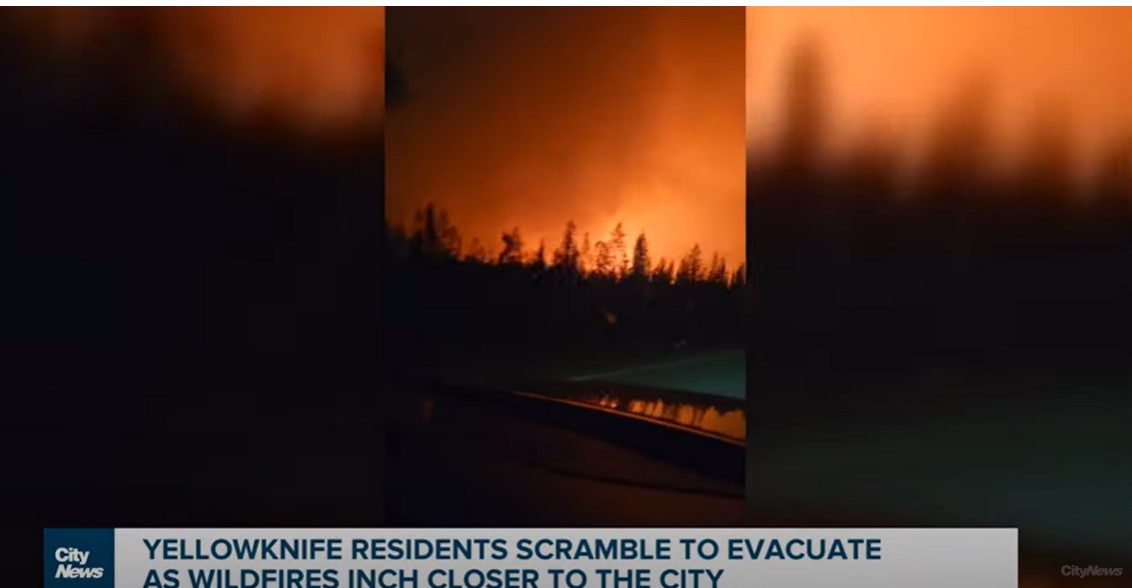Perhaps thinking back to the fires that destroyed Maui and killed over 106 victims, thousands of residents took no chances and heeded warnings to evacuate Yellowknife, the capital of Canada’s Northwest Territories, as a wildfire burned toward the city of 22,000. Firefighters on the ground and in the air battled to keep open a safe escape corridor. There are 236 active fires going on at the same time.
Airtankers flew missions overnight to keep the only route out of Yellowknife open. Meanwhile, a network of fire guards, sprinklers and water cannons was being established to try to protect the city from the fire, which had moved to within 9 miles.
Those without a car, and those deemed to be “the most vulnerable,” were airlifted out with a Hercules aircraft last night, with 22 more flights scheduled for today. Eventually they may have to charter planes in order to ensure that all the residents get out.
Many drove hundreds of miles to safety, with authorities guiding motorists through fire zones, as the worst fire season on record in Canada showed no signs of easing. In a year of unprecedented fires in many countries, Yellowknife mayor Rebecca Alta noted that this is the first time that fires have come this close to the city.
“We’ve still got some really difficult days ahead. There’s no denying that,” said fire information officer Mike Westwick. He said winds from the north and northwest predicted for Friday and Saturday could “push the fires in directions we don’t want them to go.”
Gas stations that still had fuel were open Friday morning, though the city was virtually empty, with one grocery store, a pharmacy and a bar still open.
“It’s kind of like having a pint at the end of the world,” said Kieron Testart, who went door-to-door in the nearby First Nation communities of Dettah and NDilo to check on people. Indigenous communities have been hit hard by the wildfires, which threaten important cultural activities such as hunting, fishing and gathering native plants.












